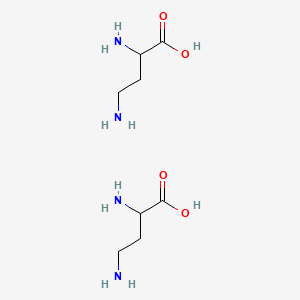I think the disconnect is free oxygen (O2) verses oxides where oxygen is combined with another element (e.g., CO2). Oxygen is very reactive and readily combines so unless there is a continuous source of free O2 (e.g., photosynthesis) it will gradually disappear from the environment. I think it is generally agreed that there was little O2 in the early atmosphere.Yo
I think you've confused me with another poster. I never brought up or discussed Miller-Urey and the link that you seem to refer to, the Carbon Cycle, was not 'presented' to you. However, if you fused Miller-Urey to the Carbon Cycle, frankly I'd be very impressed. As I stated, I'm not a chemist so I'm missing the significance of what you've done.I'm not an organic chemist so the issues people have with Miller-Urey are of little interest to me. I just consider them to be a God-of-the-gaps issue. We can't explain it so it must have been God.
Sorry, you lost me as someone credible with your much false discussion on a paper you presented to me and which I read. You admit now that it isn't anything which you can discuss and furthermore I do not think you understand. That makes me very disappointed in you because you are a faker. I did the work to look at Miller-Urey and understand it and found the link where one can actually do their experiment.
The Miller-Urey links allows one to replicate their experiment in an easy and safe environment online. All one has to do is click on the gas they want to add. The sparker and boiling water for water vapor is all set up for you. You would've discovered any oxygen presence would cause an explosion. Moreover, I used the gases you presented in your paper and it caused an explosion. It means they produced oxygen.
It means to me that you have no clue in what you are talking about haha.
You lost me on that one! Hollie brought Miller up, then claimed not to, then brought Miller up! But carbon was in the environment Miller used - in the form of Methane = CH4. Actually, early earth's atmosphere was mostly CO2 not CH4 - but chemical evolutionists prefer no Oxygen though earth's geology proves oxygen is the most abundant element in earth's crust. Also carbonates in earth's crust contain over 64 million petagrams of carbon! But carbonates contain more oxygen than carbon and were formed by the geologic carbon cycle when earth's ocean(s) absorbed CO2 from the atmosphere and precipitated it out due to reactions with Sodium, Potassium and Calcium ions in earth's primordial waters.
To simplify for you:
CO2 (carbon dioxide) is removed from the atmosphere by the oceans (thankfully or global warming would be much worse than it is). The oceans contain salts (e.g. NaCl - sodium chloride = common table salt) which become separate ions of Sodium (or Calcium or Potassium) and Chlorine (Cl). The Sodium ions combine (react with) the CO3 (carbonate) ions in the oceans to produce carbonates in earth's sediments.
I can simplify or explain further if you would like me to. I am not a chemist either - but I love chemistry (along with science in general).
True. But it is a known fact (usually ignored) that sunlight (UV radiation specifically) causes photolysis/photodissociation of water (H2O) into free Hydrogen and free Oxygen - and it is agreed early earth had plenty of water - otherwise the geologic carbon cycle could not have produced the vast carbonate deposits in earth's crust, containing over 64 million petagrams of carbon (oxidized).
So, if sunlight and water were present, then free Oxygen had to also be present. But as you posted, it may have been a low percentage of earth's atmosphere - perhaps as low as CO2 is today! However, even a low percentage of Oxygen would react - as you note it is reactive - but it is not intelligent enough to just oxidize minerals but not oxidize organic compounds!ygen
[Note: from the creation account (assuming creative days were c. 7,000 years long each as we used to believe) there was likely not even enough Oxygen for plants to have their night-time reaction, where they take in Oxygen, until the 3rd creative day. And still longer for plants to produce, by photosynthesis to produce enough Oxygen for animals to be created and survive in later creative days. Photosynthesis produces way more Oxygen then photolysis of water.]
These oxidized minerals go quite deep into earth's crust before elements like Iron are non-oxidized (very deep) - apparently Oxygen was oxidizing elements for a very long time!
The reaction producing free Oxygen starts by producing super-reactive atomic Oxygen (O) and then the Oxygen molecule (O2) - to wit:
H2O + UV radiation yields H2 + O - but this quickly becomes:
2H2O + UV radiation yields 2H2 + O2.
Oh, and this still is a continuous source of free Oxygen - the exact proportion is disputed. I think it is likely less than 1% - but some have proposed higher amounts from photolysis of water by UV radiation. I think the extremely low percentage of CO2 on earth today may have been similar to the percentage of O2 on early earth when life was created.
